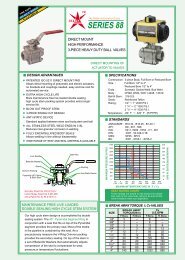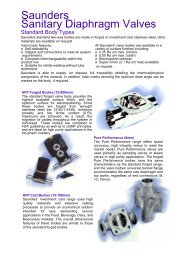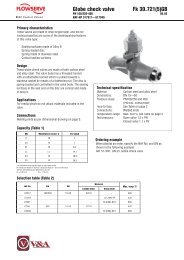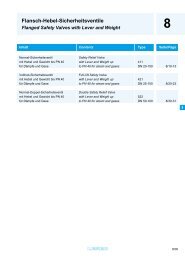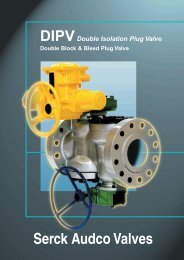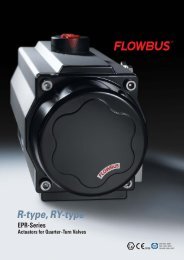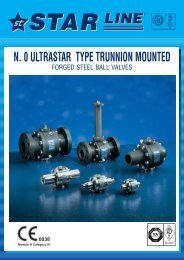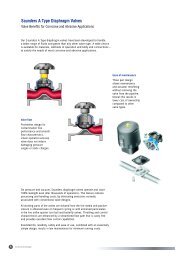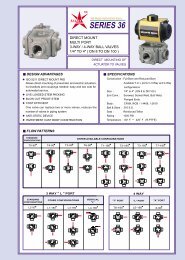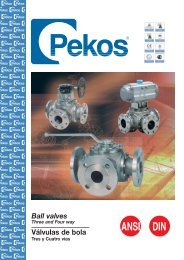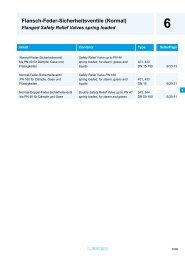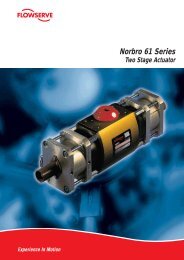Equipment/ functions - Process Valve Solutions
Equipment/ functions - Process Valve Solutions
Equipment/ functions - Process Valve Solutions
You also want an ePaper? Increase the reach of your titles
YUMPU automatically turns print PDFs into web optimized ePapers that Google loves.
Adjustable torques<br />
Minimum and maximum tripping torques for part-turn actuators for open-close duty<br />
<strong>Equipment</strong>/ <strong>functions</strong><br />
Size SG 05.1 SG 07.1 SG 10.1 SG 12.1<br />
min. [Nm] 100 120 250 500<br />
max. [Nm] 150 300 600 1 200<br />
Torques for part/turn actuators for modulating duty<br />
Size SGR 05.1 SGR 07.1 SGR 10.1 SGR 12.1<br />
min. tripping torque [Nm] 100 120 250 500<br />
max. tripping torque [Nm] 150 300 600 1 200<br />
Torque for modulating [Nm] 50 100 200 400<br />
Overload protection against torque peaks<br />
The torque switching, used for<br />
torque seating in the end position<br />
(see page 8), serves as overload<br />
protection for the entire travel, even<br />
in the case of limit seating.<br />
If excessive torque builds up at the<br />
obturator in an intermediate position,<br />
e.g. due to a trapped object, the<br />
torque switching trips after reaching<br />
the set tripping torque.<br />
After the controls have processed<br />
the torque switch signal accordingly,<br />
the motor will be switched off. As a<br />
result, valve and actuator are protected<br />
from damage.<br />
If the limit switch signals are processed<br />
accordingly in the controls,<br />
you can distinguish between a normal<br />
torque switch tripping at the end<br />
Torque<br />
OPEN<br />
Set tripping torque<br />
Travel<br />
positions and tripping in an intermediate<br />
position (fault) caused by<br />
over-torque.<br />
CLOSED<br />
9



